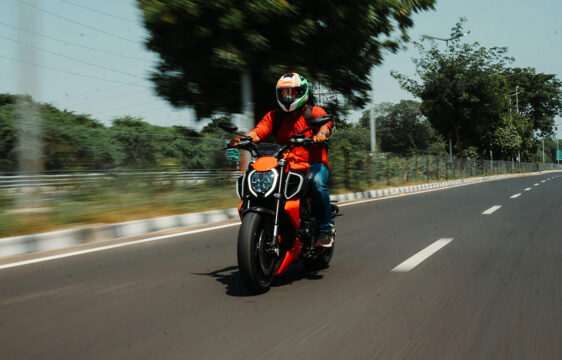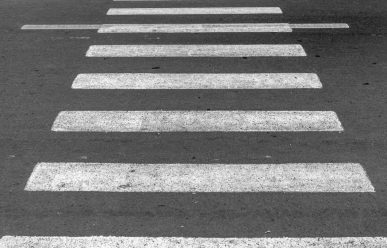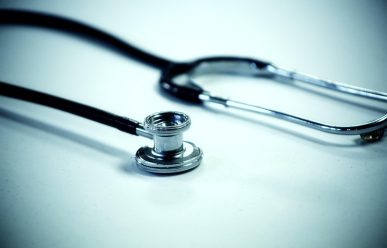Motorcyclists’ safety is everyone’s safety; motorcycles account for 15 percent of highway fatalities each year. When reviewing all vehicles involved in traffic accidents, motorcyclists are far overrepresented. Two leading contributors to this reality are speed and alcohol impairment.
According to the NHTSA, there were 6,218 motorcyclists killed in traffic crashes in 2022, representing 15 percent of total highway fatalities for that year. Speeding was a major contributing factor for motorcyclist fatalities in 2022, accounting for 35 percent of all motorcyclist fatalities. More than half (51 percent) of those fatalities were motorcyclists 21 to 24 years old. Alcohol impairment also played a significant role in motorcycle-involved crash fatalities: Forty-two percent of motorcycle riders who died in single-vehicle crashes in 2022 were alcohol-impaired.
Other causes include improperly changing lanes, avoiding other vehicles, avoiding pedestrians, failing to yield, following too close, passing improperly, turning improperly, and running traffic lights.
In years past, motorcycling was a weekend activity, today it may be the primary or sole source of transportation, making it essential for riders and drivers to pay critical attention to their driving habits and each other on the roads.
With consistent, safe driving and riding practices, all motorists can help reduce the number of motorcyclist fatalities on America’s roads.
The NHTSA found motorcycle helmets save lives and reduce injuries. After three years of declines, data estimates are that 1,782 motorcyclists lives were saved in 2017, and an additional 749 more lives could have been saved.
Head injuries are common in motorcycle accidents. Regarding motorcycle accident head injury statistics, the National Highway Traffic Safety Administrationreported that a motorcyclist without a helmet is 15% more likely to injure their head than a motorcyclist with a helmet.
Motorcyclists without a helmet are 40 percent more likely to harm their heads fatally. Motorcyclists reduce their risk of death from an accident by 37 percent when they wear a helmet.
Vehicle drivers and motorcyclists can help reduce the number of fatalities and injuries on America’s roadways by:
- Observing all traffic laws and obeying the speed limit
- Driving and riding alcohol- and drug-free
- Avoiding distractions while driving or riding
- Yielding to motorcyclists especially when drivers are turning at intersections
- Motorcycle riders taking and completing rider education and training courses
- Wearing high-visibility protective gear and DOT-compliant motorcycle helmets while riding. Learn how to identify a safe, DOT-compliant helmet at www.nhtsa.gov/motorcycle-safety/choose-right-motorcycle-helmet.
Maryland Accidents and Injuries
The Maryland Highway Safety Office, MHSO, established its Zero Deaths Maryland initiative in an effort to reduce and ultimately eliminate injuries and deaths on the state’s roads. According to its data, Maryland sees an average of 1,046 injuries and 73 deaths among the state’s motorcyclists, who are especially vulnerable in crashes due to lack of protection.
Motorcyclists face a high likelihood of injury or death, twice that of individuals involved in passenger vehicle collisions. Some other data uncovered by Zero Deaths Maryland include:
- The Baltimore metro area accounts for 46.4 percent of motorcycle accidents statewide. The Washington, DC, metro area accounts for another 33 percent
- Most motorcycle crashes occur from June to September
- Male riders are more likely than female riders to suffer injuries or death. Just seven percent of injuries and three percent of fatalities were women.
- Riders in the 21-34 age group accounted for 35 percent of all motorcyclists, 37 percent of crash injuries, and 43 percent of fatalities.
- Roughly 72 percent of Maryland motorcycle accidents cause injuries
Tips for Marylanders
- Motorcycle operators are subject to all the same basic rules of the road as other drivers, including following traffic signals and obeying speed limits
- Required licensing: Maryland drivers need a Class M license; for inexperienced riders or new riders, the MVA Motorcycle Operator Manual is good place to start studying
- Motorcyclists must wear a U.S. Department of Transportation compliant motorcycle helmet, which meets the minimum safety standards, with a DOT sticker
- Maryland requires windscreens or approved eye-protection such as goggles or face shields, which meet FDA standards indicating they are impact resistant, and non-tinted
- Passengers may only ride on motorcycles designed to accommodate them
- Riders must keep both hands on the handlebars
- Motorcycles get full use of the width of the lane they’re riding in. Two motorcycles may share a single lane or ride side by side in the same lane, but two is the limit.
- Motorcyclists may not ride between lanes and must use adjacent lanes when passing other vehicles
For more information, read the Zero Deaths Maryland Motorcycle Program Area Brief.
Virginia Accidents and Injuries
The Virginia Department of Motor Vehicles reported a 3.6 percent increase in motorcycle accidents statewide between 2022 and 2023, with 2,127 motorcycle accidents statewide in 2023. The crashes resulted in 125 fatalities, a 12.6 percent increase over the previous year.
In 2023, there were:
- 2,127 motorcycle crashes
- 121 motorcycle crashes resulting in fatalities
- 1,620 motorcycle crashes resulting in injuries
- 386 motorcycle crashes resulting in property damage only
Furthermore, 1,719 motorcycle riders were injured in crashes that year, including 1,620 riders and 99 passengers. Motorcycle accidents accounted for 2.7 percent of all traffic injuries in 2023. Of these, 738 injuries were designated as serious, accounting for 9.9 percent of all serious traffic injuries that year.
The DMV and police investigations found motorcyclists were not to blame in 37.7 percent of the accidents investigated. In those that did, the most common mistakes were:
- Speeding, 7.8 percent of accidents
- Following too close, 6.6 v of accidents
- Attempt to avoid another vehicle, 3.0 percent of accidents
- Improper lane change, 2.4 percent of accidents
Of the 2,184 motorcyclists involved in accidents in 2023, 115 were found to have been drinking, while 1,976—over 90 percent—were sober.
Tips for Virginians
- To operate a motorcycle in Virginia, you must hold a valid Class “M”, “M2” or “M3” designation or a motorcycle driver’s license. This is a fine of up to $2500.
- If you own and operate a motorcycle in Virginia, you must have a Virginia title, registration card, and license plate.
- Motorcyclists and their passengers must wear an approved motorcycle helmet that meets or exceeds the standards and specifications of the Snell Memorial Foundation, the American National Standards Institute, Inc., or the federal Department of Transportation.
- Riders must wear eye protection to protect their vision from insects, dirt, rocks, or other airborne matter. Even the wind can cause the eyes to tear and blur vision, and good vision is imperative when riding.
- Virginia motorcycle laws do not have a minimum age limit for passengers, but all passengers must use footrests/pegs, have their own seats, and wear helmets and eye protection.
- Motorcycles need headlights, horns and rearview mirrors unless they are designed for trail riding and operated during daylight hours. The required lights are:
- At least one headlight visible from 200 feet,
- A taillight visible from 500 feet,
- A working brake light, and
- A license plate light that is visible from 50 feet.
- Motorcycles must have brakes on both the front and rear wheels and mufflers. Your bike must pass an annual safety inspection.
Find out more…
- FAQs
- Experience and Knowledge – The Keys to Safe Motorcycle Riding
- Virginia Rider Training Program Policies & Procedures
Involved in a Motorcycle Accident? You May Be Entitled to Compensation
You could be entitled to various types of compensation if you suffered injuries in a Maryland, D.C., or Virginia motorcycle accident caused by someone else. But recovering compensation for injuries in these three states is more challenging than most other states because of Maryland, D.C. and Virginia’s “contributory negligence” legal standard. Under contributory negligence, an injured party can be barred from recovering any compensation if they are found to be even 1 percent at fault for the underlying accident (which caused their injury). This is a high bar to clear. Meet with a skilled personal injury attorney as early as possible following your accident to evaluate your claim.
Motorcycle accident claims are based on negligence. To succeed, you must provide the following four elements: duty, breach, causation and damages.
All drivers on the road have a duty to drive with reasonable care. That duty can be breached by acts such as disobeying traffic laws, distracted driving, or driving under the influence of alcohol or drugs. If you can connect this breach directly to your injuries and losses, and show you have economic or non-economic damages, you may have a chance to succeed in your negligence claim.
Compensatory damages are divided into two general categories:
- Economic damages: These are actual monetary losses incurred by the injured party. Examples include property damage, medical expenses, lost earnings, loss of earning capacity, and funeral and burial expenses.
- Non-economic damages: These are intangible losses that are more difficult to quantify. Examples include pain and suffering, emotional distress, diminished quality of life, disfigurement, and loss of consortium.
In rare cases in which the actions of the party that caused the accident were especially egregious, punitive damages may be awarded to punish the responsible party and help deter them and others from engaging in similar acts in the future. In Virginia, Maryland, and D.C., punitive damages are capped at specific dollar amounts.
If a loved one was killed in a motorcycle accident, you may be able to bring a wrongful death claim against the negligent party.
Motorcycle accidents often cause severe injuries to riders when they do occur, and expenses can add up quickly. You may be unable to work or have lost your transportation. Securing compensation through a motorcycle accident claim may help you cover the financial burden caused by the crash and its aftermath. Compensation available in a motorcycle accident claim might include:
- Medical Expenses – Compensation for costs of emergency care, surgeries, hospitalization, medications and rehabilitation.
- Lost Wages – Compensation for income lost during recovery or due to permanent disability that prevents you from working.
- Property Damage – Repair or replacement of your motorcycle and other personal property damaged in the crash.
- Pain and Suffering – Payment for physical pain, emotional distress and changes to your overall quality of life following the accident.
- Permanent Disability – Compensation for long-term or permanent injuries affecting your ability to work or live independently.
- Loss of Consortium – Compensation for the impact the injury has on your relationship with your spouse.
Final Thoughts
Remember all motorists, be they two wheeled, four wheeled, or eighteen wheeled, share the same rights on the roads. Everyone must observe all traffic laws, use signals and obey speed limits.
The difficulty with motorcycles is that they are smaller and harder to see. Yield to motorcyclists when turning at intersections as you may have an obstructed view of oncoming traffic. Wait to see around the obstruction, scan for all roadway users and proceed cautiously. Motorists should not follow motorcycles too closely; allow plenty of space around them to maneuver, stop, change speed or adjust lane position to avoid hazards.
Cautious driving and abiding by traffic laws are part of a driver’s duty to others on the roadways. If you think the party who harmed you breached their duty and did one of the above acts, then you may be entitled to compensation.




